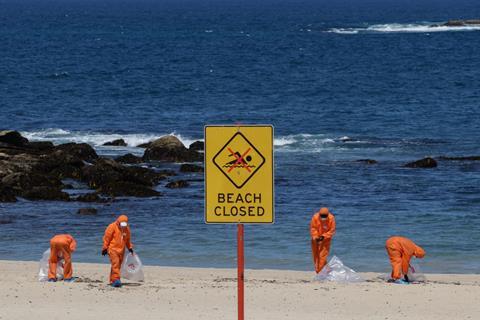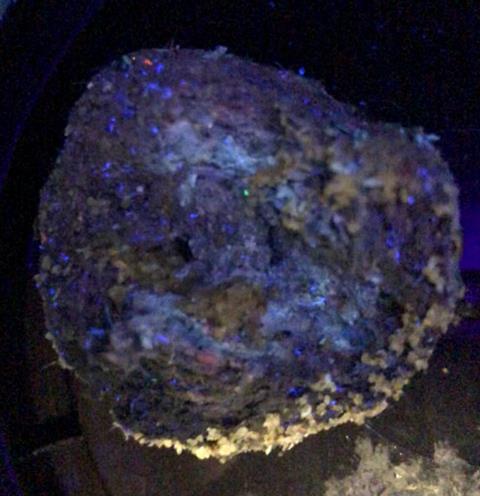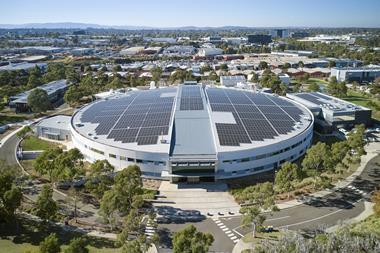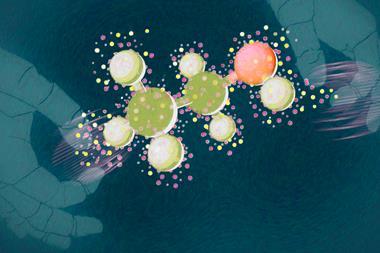After thousands of mysterious dark, sticky balls washed up on shorelines in Sydney, Australia in October – leading to beach closures – a team of scientists has revealed they are comprised of a mix of compounds consistent with human waste.

At first it was thought that the mystery objects were ‘tar balls’ resulting from a tanker accident or oil spill. However, extensive analysis has shown that the balls are more similar to ‘fatbergs’ – congealed masses of fats, oils and grease that can accumulate in sewage systems.
‘At the beginning, things were confusing, because the [balls] are black, and there is insoluble black stuff in them that doesn’t dissolve in water or organic solvents and stuff in there that looks like diesel,’ explains Jon Beves, a chemist at the University of New South Wales (UNSW) in Sydney, Australia who led the investigation. ‘It had all the feel of having oil in there somewhere, and there is, but most of what’s in there is cooking oil and soap scum and other stuff.’
Here is the promised update! Now the EPA has released their statement we can reveal all the disgusting details of the ‘tar balls’....
— Jon Beves (@JonBeves) November 7, 2024
...which are actually human-generated waste of fat and grease!
Here’s what @UNSWScience and MWAC found… thread below! 🧵 pic.twitter.com/jmRmx0KuVv
Following the news of the balls’ appearance, Beves and his colleagues at UNSW were contacted by a number of researchers who were keen to be involved in the testing after witnessing similar balls, over the years, in their own areas.
‘We had a crazy number of people working on this … people came out from everywhere and said, “Oh yes, I’ll do this experiment”,’ he says. ‘We probably had 30 or 40 people that were doing various bits and pieces on this project. It was a fun investigative sort of project for us to all be working on.’
Dishing the dirt
Partnering with UNSW’s Mark Wainwright Analytical Centre and local and national government, Beves and his team carried out extensive analytical testing involving carbon-14 dating, mass spectrometry, elemental analysis and microscopy techniques.

They started by trying to dissolve the balls in organic solvents and found that 30–50% of the mass of the balls was soluble in dichloromethane. ‘We then did all the sorts of spectroscopy things you would expect: NMR and FTIR [Fourier Transform Infrared], UV-Vis and GC-MS and mass spec-type experiments,’ says Beves. ‘We did elemental analysis to figure out roughly what the composition is … we also did some microscopy – SEM and EDS [energy-dispersive x-ray spectroscopy]-type experiments – to figure out what sort of elements [were present] and how much of them are in there.’
‘Then we did lipid analysis, basically taking the extract and injecting it into a mass spec and screening it through a library to see what other types of compounds we could identify in there.’
The analysis revealed the balls contained hundreds to thousands of different materials, including fatty acids, found in products like cooking oils, soaps and skincare items; petroleum hydrocarbons, from petrol, motor oil and diesel; and inorganic materials such as sand, calcium salts and bacteria, commonly associated with wastewater.
They also found epicoprostanol, a biomarker for human faeces; trace amounts of drugs such as tetrahydrocannabinol, methamphetamine and heart medication; pesticides; and per- and polyfluoroalkyl substances, all consistent with contamination from sewage and industrial runoff.
Dating determination
One of the key challenges with the work, says Beves, is that each ball had a slightly different composition to the next, so it was impossible for them to confirm the exact proportion of materials in the balls.
However, they were still able to draw some significant conclusions – in particular radiocarbon dating of the samples indicated that the interior of the balls contained about 70% carbon derived from plants and animals and 30% fossil carbon, while the surface was made up of approximately 85% plant carbon and 15% fossil carbon.
‘The really knockout piece of data for us was radiocarbon dating, because that showed, beyond any doubt, that most of the material that was in there wasn’t from fossil origin,’ says Beves. ‘So it can’t just be from an oil spill … most of the carbon in there is modern carbon from cooking oil or vegetable products or animal fat.’
However, it remains a mystery as to where the balls came from. ‘One plausible option could be that it’s from the sewer overflow into the stormwater, which does commonly happen,’ says Beves. ‘Or they could come from a passing cruise ship that decided to dump all its waste out. We just don’t know.’
NSW’s environment agency has said that final results regarding the exact origin of the balls were ‘due in the coming weeks’.

















No comments yet